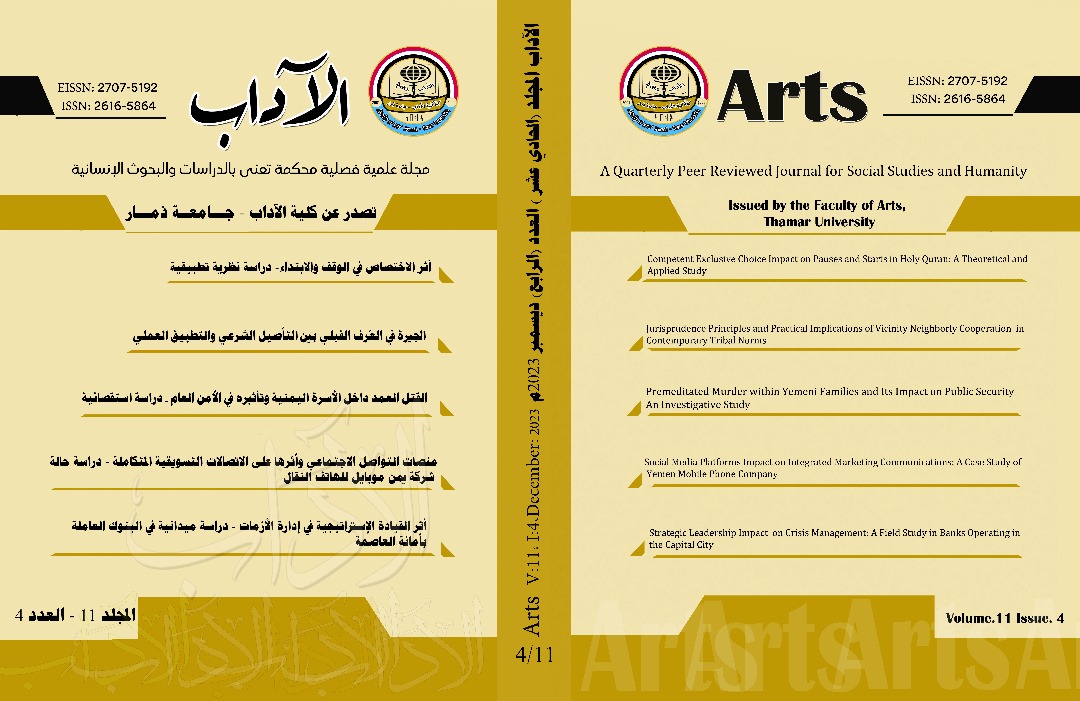Exalted Intensified Desire in the Supplications of Prophets Solomon and Zachariah, Peace Be upon Them
DOI:
https://doi.org/10.35696/arts.v11i4.1679Keywords:
Supplication, Response to Supplication, Ethics of Supplication, DivinityAbstract
This study aims to highlight the importance of desire in the supplications of the prophets, peace be upon them, through the study of two supplications made by Prophets Solomon and Zachariah, peace be upon them. The analytical inferential approach was employed. The study is divided into an introduction and three sections. Section one explores the intensification of desire in the supplication of Prophet Solomon, peace be upon him. Section two focuses on the intensification of desire in the supplication of Prophet Zachariah, peace be upon him, and Allah's response to his supplication. Section three discusses the derived benefits from the supplications of Prophets Solomon and Zachariah, peace be upon them. The results showed that intensified desire was essential in supplication and the realization of this significance by the noble prophets Solomon and Zachariah, peace be upon them, as demonstrated in their supplications, to which Allah responded. This highlighted the immense generosity and abundant blessings of Allah. Furthermore, it was concluded that these supplications exemplified other etiquettes of supplication, including supplicating using divine terms, praising Allah, stating the good purpose of the supplication, and expressing need and dependence.Downloads
Download data is not yet available.
Downloads
Published
2023-12-29
How to Cite
Al-Harbi, F. B. H. B. D. A.-B. . (2023). Exalted Intensified Desire in the Supplications of Prophets Solomon and Zachariah, Peace Be upon Them. Journal of Arts, 11(4), 512–544. https://doi.org/10.35696/arts.v11i4.1679
Issue
Section
1
License

This work is licensed under a Creative Commons Attribution 4.0 International License.
Copyright and Licensing
For all articles published in journal, copyright is retained by the authors. Articles are licensed under an open access Creative Commons CC BY 4.0 license, meaning that anyone may download and read the paper for free. In addition, the article may be reused and quoted provided that the original published version is cited. These conditions allow for maximum use and exposure of the work.



